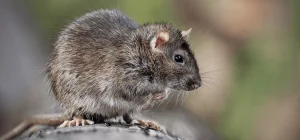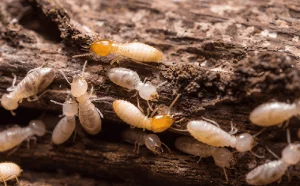The state of Florida ranks No. 1 for the highest risk of termite damage in the country. These pests infest millions of homes per year and cause billions of dollars in damage. They can wreak havoc for years without being seen, feeding silently and secretly until it is too late.
To stay ahead of these pervasive pests, consider Nozzle Nolen’s proactive, preventative 365 COMPLETE Home Protection Package, and be on the lookout for these warning signs:
1. You See Them
Termites are eusocial insects (a cooperative group) that form colonies, and individuals are broken down into three castes or roles, each with a distinctive appearance.
Workers are white, approximately one-eighth inch long, and wingless; a closer look reveals that they have six legs, two antennae, and three body parts. Soldiers are beige with large brown heads, and they wield a set of strong biting mandibles. Reproductives are brown or black, about a half-inch long, and grow wings for mating flights when a male and female pair up to start a new colony. The termite queen will expand her abdomen multiple times her size in order to maximize egg production, and can be mistaken for a slug. Termites discard their wings when they’re settling down to mate, so look for them on windowsills and door frames, and in bathtubs or vents.
2. You Hear Them
Soldier termites bang their heads against wood or shake their bodies when the colony is in danger, and this can create clicking or tapping sounds in your walls.
Similarly, as termites burrow and consume wood, it creates a honeycomb pattern that compromises structural integrity. Thus, damaged walls or floors may sound hollow or papery when being inspected.
3. It’s Swarming Season
Florida’s warm, humid climate gives termites a perfect home year-round, but they’re especially active during the swarming season between April and July. Swarmers are the aforementioned reproductives that leave a mature colony to establish a new one. They are brown or black, up to a half-inch long, and have long white wings with rounded tips. Swarmers are attracted to moisture, as well as food sources such as decaying wood, mulch, and the soil surrounding them.
4. Holes and Cracks
Structurally compromised floors and walls can cause the entire house to shift or sag, causing cracks to form along walls and ceilings.
When swarmers leave their current colony, they create very small exit holes in the drywood. Other termites will plug these holes with their excrement, which appears as a wood-like substance.
5. Tubing and Tunneling
Mud tubes about the width of a pencil will reach from the soil to the wooden part of a home, often the foundation. These tubes allow termites to travel without being exposed to the sun, wind, and weather. If a broken off portion of a tube reappears within days, you have an active infestation.
Tunnels, on the other hand, are not always obvious to the naked eye, so look inside a broken piece of wood for signs of maze-like “galleries” and grooves. These are signs of an especially pervasive infestation.
6. Droppings, Frass, or Feces
Regardless of the euphemism you prefer, excrement comes at your detriment. Termites subsist by extracting the small amount of moisture or cellulose in wood, so the waste they leave behind takes the form of hard pellets. Termite droppings can appear to be sawdust, wood shavings, or a powdery, black substance. This “frass” will be found anywhere there is wood in the infested home.
7. Drooping, Warping, and Sloping
As floors become structurally unsound, the unstable boards may begin to warp, sag, buckle, and squeak. Compromised drywall and ceilings may appear to droop or even bulge and blister if the wood behind them has been decimated by a termite infestation.
8. Stiff or Sticking Doors and Windows
As the wood foundation begins to warp from termite damage, the openings on your home will swell. This will cause doors and windows to stick or fit too tightly, resulting in difficulty opening or closing them. Don’t overlook this trouble as a minor inconvenience; it may indicate a bigger problem.
9. Exterior Wood Damage
This may occur on nearby stumps, furniture, or wooden parts of your home that come in direct contact with the soil. The wood will crumble or look like it has been carved up by knives. Also, look for hollowed-out or blistering pieces of wood.
10. You’re Reading This Article!
If you suspect you have a problem, it may already be too late. Termites can be incredibly difficult to treat, and even if you know the warning signs, tracing the problem to its source and stopping it is another story entirely. If your home is under attack from termites, or you fear it could come under attack in the future, contact us for a FREE consultation. Also, check out our preventative 365 COMPLETE Home Protection Plan.

